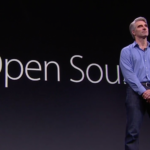Midjourney, an online tool for generating AI images has halted free trials due to rampant misuse and influx of new users. It was earlier reported that the move is linked to fake images of Donald Trump’s arrest and Pope Francis wearing a stylish coat led the company to pull the plug on the free tier of their product.
(The company provides various paid plans that range from $10 to $60 per month, each offering different usage options.)
But the company’s founder and CEO David Holz denied this, speaking to The Verge. He explained that they were halting the trials because of massive amounts of people making throwaway accounts to get free images, “We think the culprit was probably a viral how-to video in China. This happened at the same time as a temporary gpu shortage. The two things came together and it was bringing down the service for paid users.”
He also went to on add that the high-profile deep fakes couldn’t have been created using the free tier as it doesn’t offer access to version 5 (the latest version) of Midjourney, which helps users create realistic images. The tool has been used to create fake images of different other politicians, celebrities, and entrepreneurs – including Emmanuel Macron, Elon Musk, and Alexandria Ocasio-Cortez.
The rise of these fake images generated by AI image generators like Midjourney has caused concern among the public. It is almost impossible for an average user to know if the images in the discussion were not real.
In the two instances of Donald Trump and the Pope’s images, there was apparently no bad intention. The images of Donald Trump’s arrest, for example, were created by journalists who shared them, highlighting that they are fake. However, many still believe that these tools could be used by bad actors to spread misinformation and propaganda.
As the fake images generated using tools like Midjourney continue to raise concerns about the spread of misinformation, it would be interesting to see how the companies behind these products deal with these issues in the future. Currently, most of the available tools have relatively relaxed restrictions. As the prevalence of high-profile fake images continues to grow, it’s likely that significant changes to these lenient tools are imminent.






